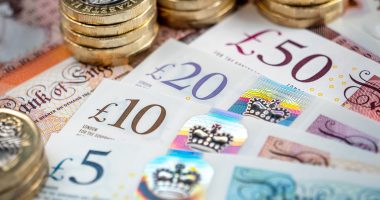THE UK economy bounced back more strongly than first thought in the last six months of 2020, but was still down 9.8% overall for the year.
Gross domestic product (GDP) was helped by the easing of lockdown restrictions and the Eat Out to Help Out scheme.
? Read our coronavirus live blog for the latest news & updates…
The economy grew by 16.9% from July to September, and 1.3% from October to December, the Office for National Statistics has said.
This is slightly better than original estimates – where growth was predicted to be 16.1% and 1% respectively.
But in gloomier news, GDP shrank by more than expected from April to June because of the first coronavirus lockdown, falling by 19.5%.
This is when the country plunged into its “worst ever” recession as businesses continued to be shut down by the pandemic.
What this means for your personal finances
GROSS domestic product (GDP) is one of the main indicators used to measure the performance of a country’s economy.
When GDP goes up, the economy is generally thought to be doing well although today’s figures aren’t as strong as hoped.
Negative growth often brings with it falling incomes, job cuts and lower consumption.
The Bank of England (BoE) uses GDP as one of the key indicators when it sets the base interest rate.
This decides how much it will charge banks to lend them money, and is a way to try to control inflation and the economy.
So, for example, if prices are rising too fast, the BoE could increase that rate to try to slow the economy down. But it might hold off if GDP growth is slow.
The BoE cut interest rates twice in March due to coronavirus.
Base rate cuts means mortgage borrowers now typically benefit from lower rates, but at the other end of the scale savers earn less on their savings.
To measure GDP, the Office for National Statistics (ONS) collects data from thousands of UK companies.
Andrew Wishart, UK economist at Capital Economics, told The Sun the full impact of the crisis on jobs and businesses will only become apparent once the government starts to withdraw its support.
The research firm expects unemployment to double from 4 per cent to 8 per cent, with the same number of companies likely to go bust.
Experts had first estimated a drop of 19% for these three months.
Overall, the economy was down by 9.8% in 2020 – slightly better than the 9.9% first estimated – but it still marked its worse performance in 300 years.
Before GDP was officially measured, the worst yearly fall was estimated to have been 13% in 1709 thanks to the Great Frost.
This was followed by a 9.7% drop in 1921 due to coal strikes, unemployment and the depression that followed First World War.
The latest figures are based on revised data released by the ONS today.
So far in 2021, the UK economy shrunk by 2.9% in January due to the third lockdown, with some of the toughest restrictions in place since Covid hit.
But the fall wasn’t as bad as the 4.9% dip economists had been expecting.
It comes after Bank of England’s governor Andrew Bailey said the economy will recover to its pre-Covid level by the end of this year thanks to the vaccine rollout.
The recovery will come once lockdown eases and people start spending money saved while at home, he says.
Businesses including pubs, restaurants and gyms are set to reopen from April 12 at the earliest as part of the roadmap out of lockdown.
Mr Bailey said: “I’m more positive — but with a large dose of caution.”
Jonathan Athow, deputy national statistician at the ONS, said: “Our revised figures show the economy shrank a little more than previously estimated, before recovering slightly more strongly in the second half of last year.
“However, these new estimates paint the same overall picture as before, with historically large falls in GDP in the spring, followed by a recovery in the summer and autumn.”
The latest GDP figures come as UK unemployment hit 1.7million in January with 11,000 more losing jobs.
Around half of UK workers have suffered pay cuts in real terms due to the coronavirus crisis, according to research.
But promisingly, millions of young workers will get a pay rise of £345 from April, as the National Living Wage increases.
This post first appeared on thesun.co.uk















